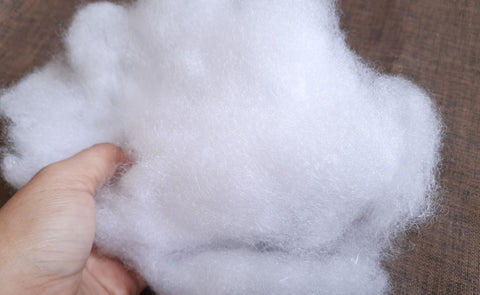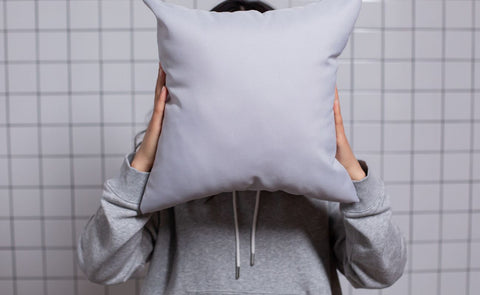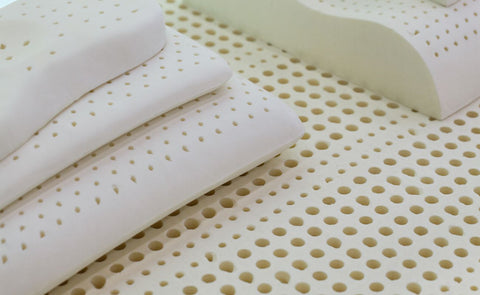You spend roughly one-third of your life sleeping, yet you probably give your mattress more thought than your pillow. Choosing what pillow fill is right for you—feather, foam, or alternative determines whether you greet the day energized or with a stiff neck. In the next few minutes you’ll learn exactly how each fill performs, how it feels against your head and neck, and—most importantly—how to decide which one belongs on your bed tonight.
Feather Fill: Classic Loft You Can Fluff to Perfection
What It Is
Feather pillows are filled with the outer plumage of geese or ducks. The quills create a light, airy core that you can shape with a quick fluff.
How It Feels
-
Support: Medium-soft; you can mold the pillow under your head or arm for a custom cradle.
-
Temperature: Feathers allow moderate airflow, but they trap a bit more heat than foam or open-cell alternatives.
-
Noise & Motion: Quills can rustle slightly when you shift, something to note if you’re an exceptionally light sleeper.
Durability & Care
A high-quality feather pillow can last three to five years when you protect it with a zippered cover. Wash on gentle, dry thoroughly, and give it a weekly fluff to restore loft.
Best For You If…
-
You sleep on your stomach or change positions often.
-
You love a traditional, “hotel” feel that you can punch and plump.
-
You don’t mind occasional maintenance to keep loft high.
Foam Fill: Contoured Comfort for Precision Support
What It Is
Foam pillows come in solid slabs, shredded pieces, or hybrid “cored” designs combining foam with cooling gels or perforations. The most common foams are memory foam and latex.
How It Feels
-
Support: Medium-firm to firm, depending on density. Foam conforms to your head and neck,leasing pressure points and keeping the spine aligned.
-
Temperature: Solid memory foam holds warmth unless it’s ventilated; shredded foam or latex encourages airflow and stays cooler.
-
Responsiveness: Memory foam slowly rebounds, giving that signature “hug,” while latex pops back immediately.
Durability & Care
Foam resists clumping and keeps its shape for three to six years. Spot-clean solids; most shredded-foam pillows feature removable, washable covers so you can refresh without ruining the core.
Best For You If…
-
You’re a side or back sleeper craving consistent neck support.
-
You suffer from chronic shoulder or cervical pain.
-
You prefer a pillow that stays put—no nightly fluffing required.
Alternative Fills: Modern Blends for Conscious Sleepers
What They Are
“Alternative” covers any plant-based or synthetic option that mimics down without animal products. Popular choices include microfiber polyester, kapok fiber, bamboo, and buckwheat hulls.
How They Feel
-
Support Range: Anything from ultra-soft (poly micro-denier) to medium-firm (buckwheat).
-
Breathability: Generally excellent—fibers or hulls promote airflow, making alternatives great for hot sleepers and humid climates.
-
Hypoallergenic Factor: Most blends resist dust mites and mold, a win for allergy sufferers.
Durability & Care
Synthetic down alternatives last about two to three years; natural fibers such as buckwheat or kapok stretch closer to five with proper airing. Nearly every alternative pillow is machine-washable—an easy victory for hygiene.
Best For You If…
-
You’re vegan or prefer cruelty-free bedding.
-
You need a budget-friendly option that still feels luxurious.
-
You like experimenting—many alternative pillows let you add or remove fill to perfect loft.
What Pillow Fill Is Right for You—Quick Comparison
|
Feature |
Feather |
Foam |
Alternative |
|
Loft Adjustability |
High (fluff) |
Low–Medium (shredded & adjustable cores only) |
High (zip-open designs) |
|
Neck Alignment |
Moderate |
Excellent |
Varies by blend |
|
Cooling Potential |
Fair |
Good (shredded/latex) |
Excellent |
|
Allergen Resistance |
Low without protector |
Medium (solid foam resists mites) |
High |
|
Longevity |
3–5 yrs |
3–6 yrs |
2–5 yrs |
|
Maintenance |
Weekly fluff, occasional wash |
Spot-clean or wash cover |
Machine-wash or sun-air |
Your 3-Step Pillow-Picking Checklist
-
Identify Your Primary Sleep Position
Side sleepers need a loft that fills the shoulder-to-ear gap—foam or firm alternative blends shine here.
Back sleepers benefit from a medium loft that keeps the cervical spine neutral; feather or ventilated latex often wins.
Stomach sleepers require the thinnest, softest pillow to avoid neck hyper-extension—think feather or low-loft down alternative. -
Gauge Your Temperature Needs
If you routinely flip your pillow to the “cool side,” gravitate toward shredded foam, latex, or breathable alternatives such as bamboo or buckwheat. Warm sleepers should skip solid memory foam unless the core is gel-infused or perforated. -
Balance Budget With Longevity
Feather and foam cost more upfront but outlast budget microfibers. If you replace pillows frequently for freshness, a value-priced alternative may make more sense. If you crave lasting structure, invest in higher-density foam or premium feather blends.
Fine-Tuning Loft and Firmness
-
Add or Remove Fill: Many foam and alternative pillows include extra fill in the box. Take a few nights to test, then tailor height until your neck feels neutral.
-
Use a Pillow Protector: A zippered case guards against sweat, skin oils, and dust mites, extending the lifespan of every fill type.
-
Refresh Regularly: Air pillows in the sun for an hour to eliminate moisture and revive loft, especially for feather and natural alternatives.
When to Replace Your Pillow
Even the best pillow doesn’t last forever. Perform this simple test every six months: fold the pillow in half, squeeze, and release. If it fails to spring back, your fill has fatigued—and your sleep quality probably has, too. Replace feather and synthetic alternatives after three years, foam after five, and buckwheat once hulls lose their crunch.
Sleep Better Tonight—Choose Your Perfect Fill
By now you know what pillow fill is right for you—feather, foam, or alternative—because you’ve matched each material’s personality with your own sleep habits. Whether you crave the moldable luxury of feathers, the contouring support of foam, or the breathable innovation of modern alternatives, your next great night’s sleep is only one pillow away. Listen to your body, trust the checklist, and claim the comfort you deserve. Rest well—you’ll feel the difference tomorrow.



